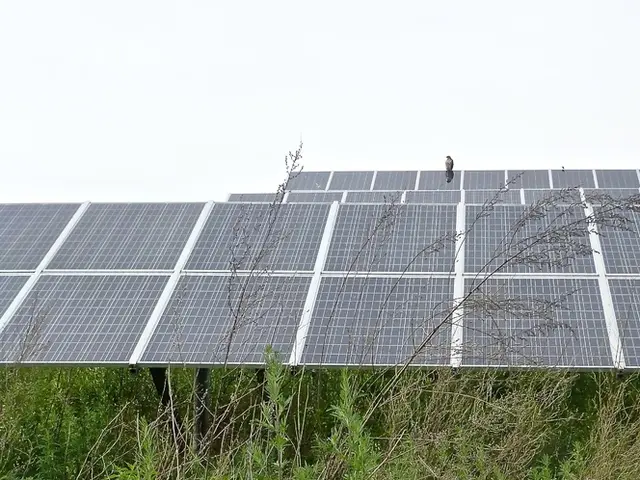Potential perils of artificial intelligence data facilities to American electrical infrastructure due to fire hazards.
The rapid expansion of AI-powered data centers in the United States is causing a significant strain on the nation's energy grid, according to a new report by Bloomberg. The analysis, conducted using data from 1 million home sensors tracked by Whisker Labs and market analytics from DC Byte, suggests that AI data centers could consume about 4.4% of total electricity in 2024, with projections reaching between 6.7% and 12% by 2028. This could account for up to 12% of U.S. electricity demand.
The unpredictable energy demands of these data centers could exacerbate problems with the energy grid, potentially leading to appliance failures, increased fire risks, and power outages. Over half of households experiencing significant power distortions are located within 32 km of major data centers, indicating a potential link between the proximity of data centers and disruptions in electricity flow.
The large and growing electricity demand of AI data centers poses a threat to grid stability. AI data centers require massive power, quadrupling electricity consumption growth compared to grid capacity expansion, which increases costs for consumers. Besides electricity, AI data centers consume large land and water resources, adding to sustainability challenges.
Without intervention, the grid may fall short of meeting AI demands while maintaining reliability and affordable energy costs. The energy is primarily consumed during AI model training (which is extremely power-intensive) and inference (energy per query is lower but query volume is enormous). Specialized AI hardware such as NVIDIA H100 GPUs draws significantly more power than traditional computing equipment, amplifying energy consumption per server rack.
However, there are promising paths to mitigate grid strain and sustain AI growth. AI workloads can be more flexibly scheduled than traditional data center tasks, allowing temporary scaling down during peak grid stress hours to avoid overloads. This can access underutilized power capacity and ease grid pressure without massive new infrastructure.
Innovations in chip design, system, and software architectures could also reduce AI energy needs. Incorporating renewable energy sources, expanding grid capacity, and closely monitoring power supply to integrate AI demand responsibly are critical government priorities. The U.S. government's AI Action Plan and executive orders highlight the need for coordinated government and industry efforts to strengthen the grid.
However, not everyone agrees with the findings of the report. A spokesperson for Illinois' largest utility company, Commonwealth Edison, expressed skepticism regarding the accuracy of Whisker Labs' claims. Aman Joshi, Chief Commercial Officer of Bloom Energy, commented that no power grid is designed to handle load fluctuations from one or more data centers at a single time.
In essence, while AI data centers pose an unprecedented energy demand challenge in the US, flexible workload management combined with technological and infrastructural advancements offers promising paths to mitigate grid strain and sustain AI growth.
Read also:
- Artificial Intelligence successfully imitates individual personalities with remarkable accuracy, achieving an 85% match within two hours of dialogue.
- In the Coming Days, Could Nanotech match Genetic Engineering's Influence in the Next Era?
- Top Updates: Highlights from the Data News Sphere
- Commission requested to suggest a directive safeguarding workers from radiation risks via ionizing radiation exposure.








